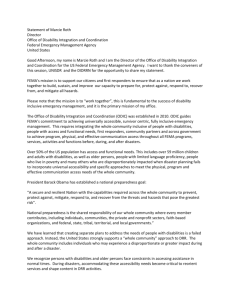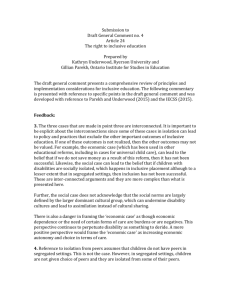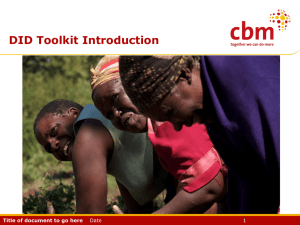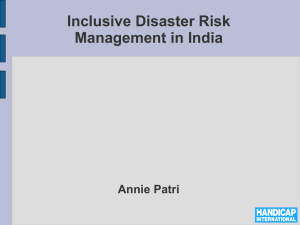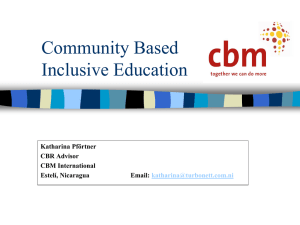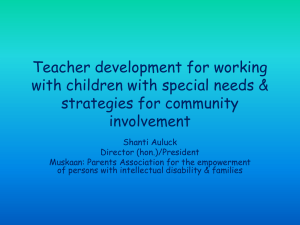Conflict and emergencies – possibilities for advancing
advertisement
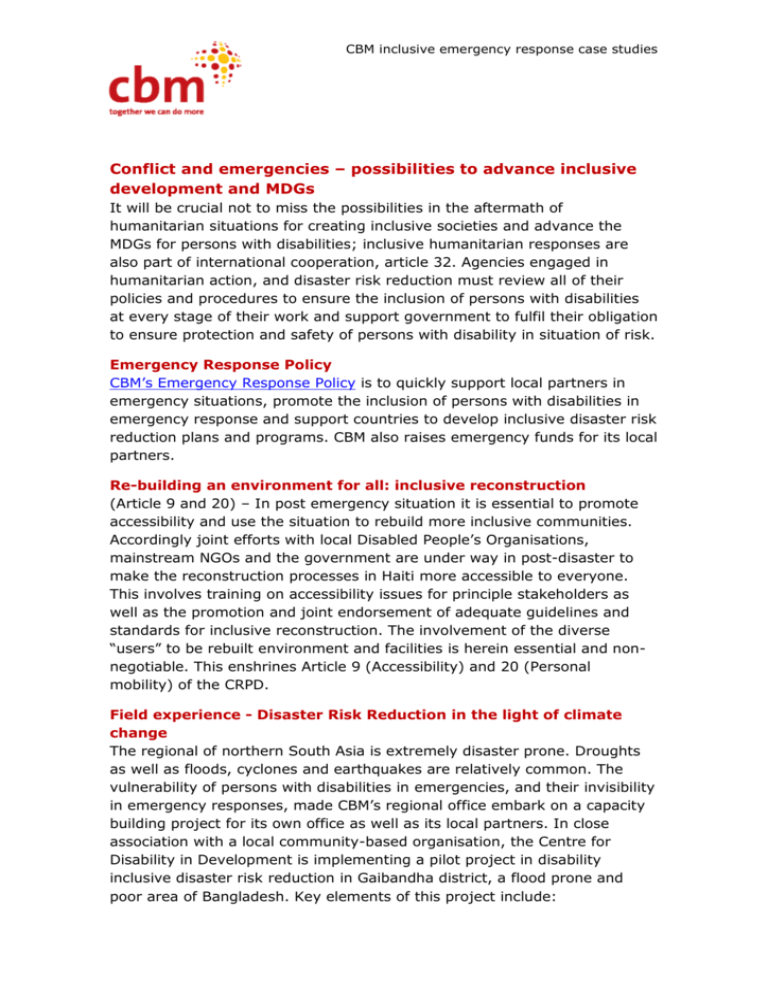
CBM inclusive emergency response case studies Conflict and emergencies – possibilities to advance inclusive development and MDGs It will be crucial not to miss the possibilities in the aftermath of humanitarian situations for creating inclusive societies and advance the MDGs for persons with disabilities; inclusive humanitarian responses are also part of international cooperation, article 32. Agencies engaged in humanitarian action, and disaster risk reduction must review all of their policies and procedures to ensure the inclusion of persons with disabilities at every stage of their work and support government to fulfil their obligation to ensure protection and safety of persons with disability in situation of risk. Emergency Response Policy CBM’s Emergency Response Policy is to quickly support local partners in emergency situations, promote the inclusion of persons with disabilities in emergency response and support countries to develop inclusive disaster risk reduction plans and programs. CBM also raises emergency funds for its local partners. Re-building an environment for all: inclusive reconstruction (Article 9 and 20) – In post emergency situation it is essential to promote accessibility and use the situation to rebuild more inclusive communities. Accordingly joint efforts with local Disabled People’s Organisations, mainstream NGOs and the government are under way in post-disaster to make the reconstruction processes in Haiti more accessible to everyone. This involves training on accessibility issues for principle stakeholders as well as the promotion and joint endorsement of adequate guidelines and standards for inclusive reconstruction. The involvement of the diverse “users” to be rebuilt environment and facilities is herein essential and nonnegotiable. This enshrines Article 9 (Accessibility) and 20 (Personal mobility) of the CRPD. Field experience - Disaster Risk Reduction in the light of climate change The regional of northern South Asia is extremely disaster prone. Droughts as well as floods, cyclones and earthquakes are relatively common. The vulnerability of persons with disabilities in emergencies, and their invisibility in emergency responses, made CBM’s regional office embark on a capacity building project for its own office as well as its local partners. In close association with a local community-based organisation, the Centre for Disability in Development is implementing a pilot project in disability inclusive disaster risk reduction in Gaibandha district, a flood prone and poor area of Bangladesh. Key elements of this project include: Persons with disabilities integrated into local disaster management committees – improving disability inclusive disaster preparedness Flood shelters to accommodate most vulnerable - warning, evacuation, rescue and relief mechanisms will be made disability-friendly Houses, latrines and water sources – constructed modelling accessibility requirements Training program for persons with disabilities – training in seasonal trades to increase livelihood sustainability Vulnerability and Capacity Assessments – focus on attitudinal and behavioural change in the community CBM will capitalize the outcomes of this project with the aim to replicate the experiences in other disaster prone regions and communities in South Asia. Together with the Center for Disability and Development in Bangladesh, CBM produced a more general learning document on National Dialogue on Disaster and Persons with Disabilities. Moreover, in preparation for the Oslo conference “Disability, Conflict and Emergencies”, CBM and the Atlas Alliance have produced a factsheet on Disability Conflict and Emergencies. 2
